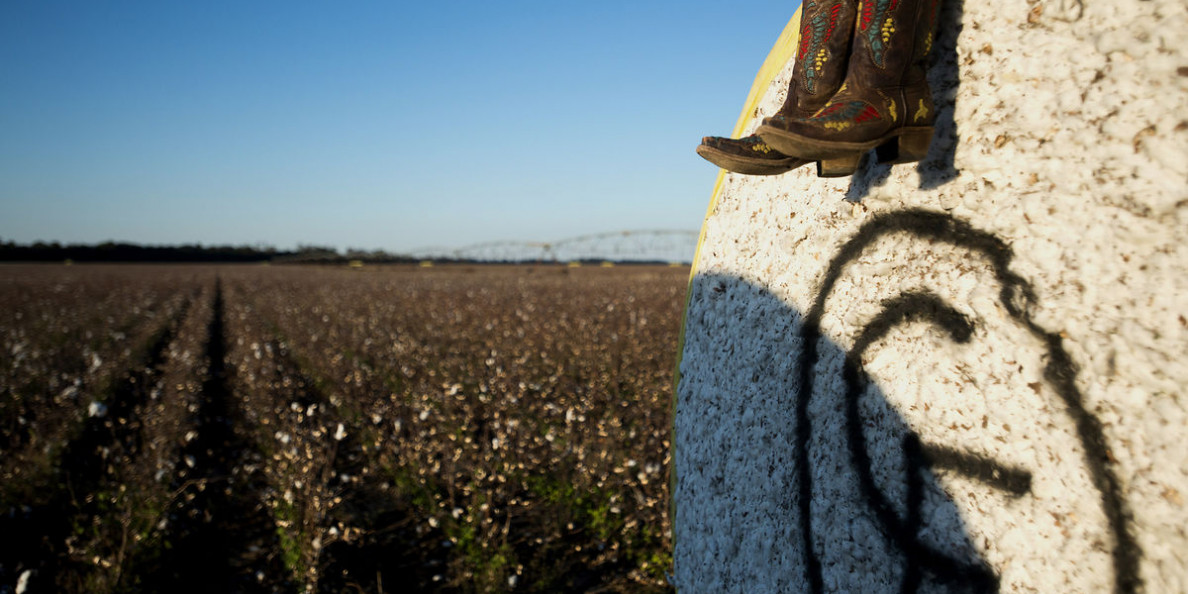Cotton Market Weekly June 28, 2024
- The December contract closed 196 points higher, settling at 74.58 cents per pound.
- Cotton futures had a bullish run this week, finding support from fundamental and technical factors. Speculators currently hold a near-record short position, and the Indian Minimum Support Price was part of the reason for the rally. A dry and hot forecast for Texas also helped push prices up. Prices ran into resistance around 75.84 cents, and a disappointing Export Sales Report caused prices to retreat.
- This past week was relatively quiet regarding daily volume traded. Total open interest decreased 4,050 contracts to 212,438.
- Bales eligible for delivery against futures decreased substantially compared to the week prior. A total of 77,152 bales were decertified, bringing certificated stock to 59,035 bales.
- In the U.S., 30% of the crop is now squaring, and 8% is setting bolls. The good to excellent condition rating increased to 56% from 54%. In Texas, 49% of the cotton crop rated good to excellent, 75% in Oklahoma, and 61% in Kansas.
The USDA Acreage Report surprised the market by indicating that 11.67 million acres would be planted in the U.S. for the 2024/25 crop.
- The prices referenced above do not reflect this report’s adverse impact on the market; given the Acreage Report’s significance, we felt it best to relay this information on the day of its release.
- For reference, the market expected acreage to be closer to 10.8 million planted acres. The higher acreage caught the market off guard and was a bearish surprise to prices. The Prospective Plantings Report showed the intended plantings to be 10.23, meaning a 14% increase in acreage was reported.
- The most significant increase came from Texas, where acreage increased by 900,000 acres to 6.4 million acres. Oklahoma’s acreage was lowered by 40,000 to 460,000 acres, and Kansas’s acreage stayed at 110,000 acres.
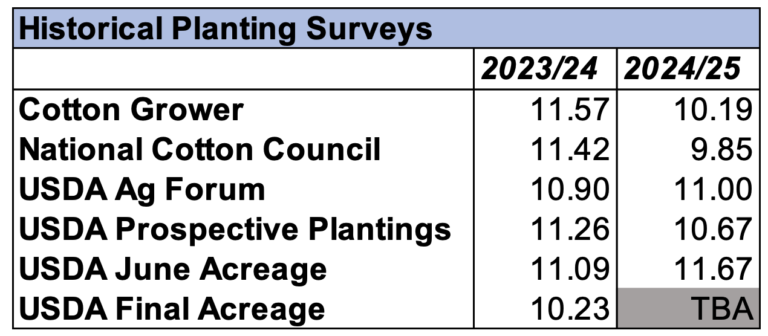
The Fed’s preferred inflation gauge showed the slowest pace of increase in inflation in 3 years.
- The U.S. Personal Consumption Expenditure (PCE) Index showed inflation rose 2.6% year-over-year and 0% month-over-month. This is still over the Fed’s 2% target but was aligned with expectations. The stock market reacted positively to this news and finished the week on a high note.
- The Conference Board’s Consumer Confidence Index showed consumers are apprehensive about the U.S. economy. For June, confidence fell to 100.4, down from 101.3 reported in May.
- On Wednesday, the Japanese Yen hit its lowest level since 1986 after investors bet against it. The U.S. Dollar hit an 8-week high the same day, and some support was found from weakness in the yen and hawkish Fed comments.
- Crude oil prices stayed higher due to concerns that global oil supplies would remain tight.
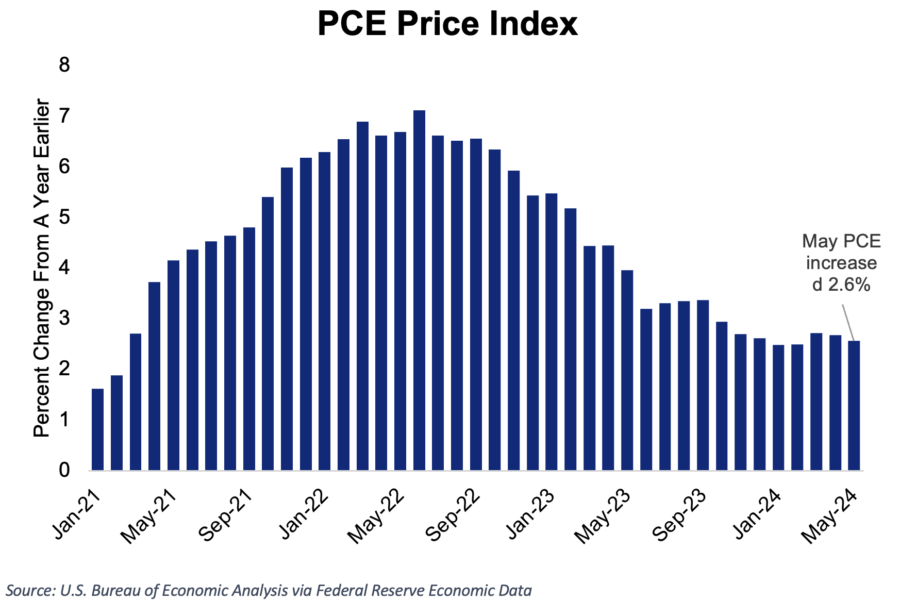
The U.S. Export Sales Report was overall disappointing for the week ending June 20.
- For the current crop year, U.S. exporters sold a net total of 90,600 Upland bales and 67,600 bales for the new crop year. The combined sales were close to the average amount typically sold at this point in the year but below what has been reported in recent weeks.
- Shipments of 141,000 Upland bales were far behind the approximate pace of 260,000 bales needed to reach USDA’s export estimate of 11.8 million bales. Total bales exported as a percent of the final crop are still below average for this point in the year.
- A net total of 4,800 Pima bales were sold, and 6,200 bales were shipped.
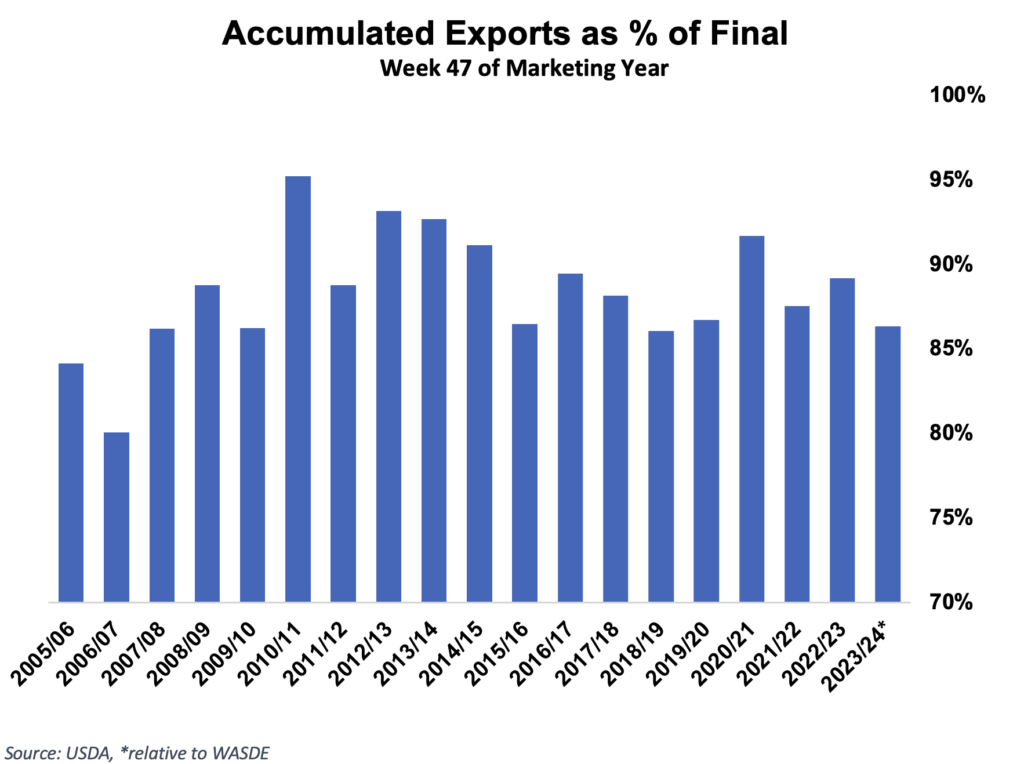
The Week Ahead
- Next week will be another holiday-shortened trade week. The market will be closed on July 4 in observance of Independence Day. This will delay the release of the Export Sales Report, Cotton On-Call Report, and Commitment of Traders Report.
- Now that the market has a new acreage estimate, attention will shift to the next WASDE Report, released on July 12. The data from the Planted Acreage Report will be used to update the 2024/25 U.S. crop estimate.
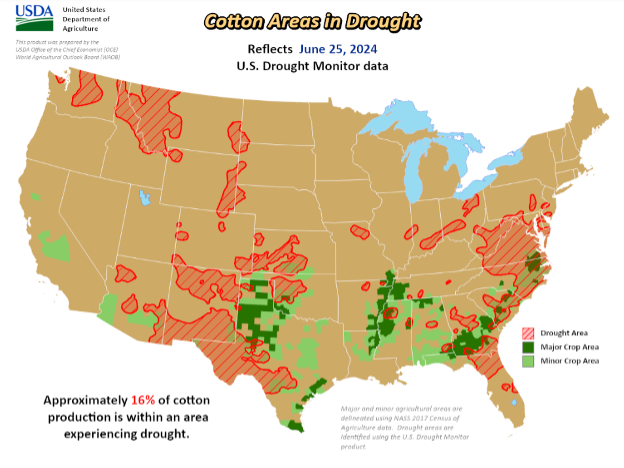
The Seam
As of Thursday afternoon, grower offers totaled 18,717 bales. On the G2B platform 135 bales traded during the week with an average price of 55.05 cents/lb. The average loan was 44.36 bringing the average premium received over the loan to 10.69 cents/lb.


